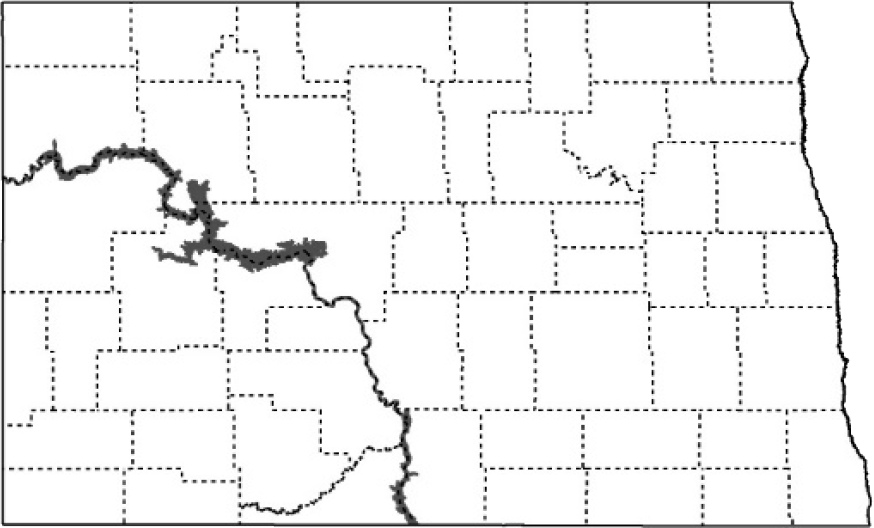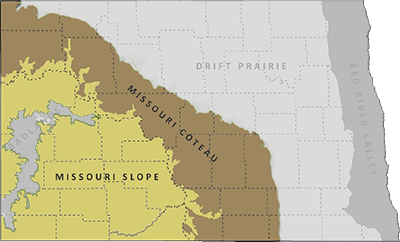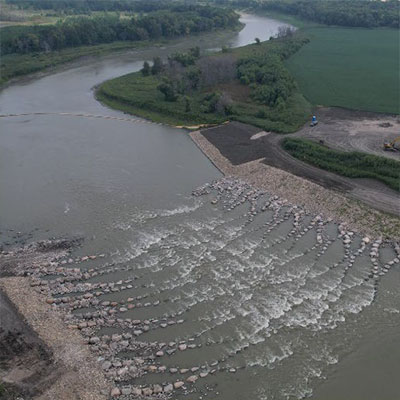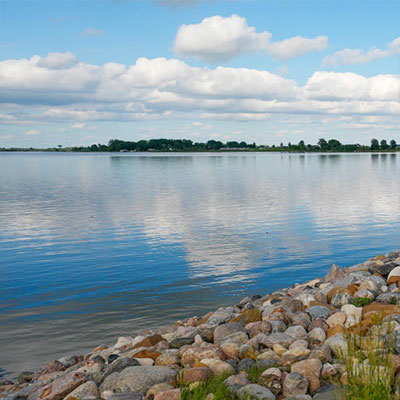Least Tern (Interior)

NDGF
L 9”, WS 20”, 1.5 oz. The smallest tern species in North America. Bright yellow bill with a black tip, yellow legs and white forehead.
Status in North Dakota
Occurs in North Dakota from mid-May to early September. Peak breeding season mid-June to mid-July.
Reason for SWAP Designation
Regionally or globally imperiled (SGCN a.).
The Interior Least Tern was listed as a Federal endangered species on 5/28/1985 and was delisted due to recovery on 1/13/2021.
However, it remains a priority due to limited range and breeding habitat in North Dakota.
Threats
As a result of channelization, irrigation, and dam construction along the Missouri River, sandbar habitat for nesting has been drastically altered.
Current river flows do not mimic natural river flows instrumental in forming sandbar habitat.
High water releases during peak breeding season may flood nests.
Environmental contaminants from oil/gas or other environmental spills may enter the Missouri River System.
Encroachment of woody vegetation onto sandbars reduces nesting habitat availability.
Nests may be destroyed by recreationists using sandbars or by the release of water during midsummer when terns are still on the nest.
Low water levels increase access of mammalian predators.
Classified as climate endangered, Least Tern is projected to lose more than half of its current distribution by 2050, with no net gains of new areas (Audubon).
Mortality from collisions with overhead lines and collisions with wind turbines is of increasing concern.
Research and Monitoring
Habitat requirements and demographics have been extensively researched on the breeding grounds.
Information lacking on migration strategies, stopover sites, and wintering behaviors.
A draft post-delisting monitoring plan has been developed.
Management Recommendations
- Mimic natural flows on the Missouri River to create sandbar habitat.
- The creation of dredged islands or clearing of sandbar vegetation may provide new nesting habitat for terns, but the productivity is presumed to be much less than for natural sites.
- Use mechanical and chemical applications to remove vegetation.
- Raise awareness among boaters and outdoor enthusiasts to avoid approaching nesting sites, including keeping dogs on leashes, and limit human access to sandbars or sensitive areas where terns are nesting.
- Follow aquatic nuisance species rules and regulations.
- Follow beneficial or best practices during the design, siting, construction, operation, and maintenance of tall structures (e.g. transmission lines, communication towers, wind turbines).




